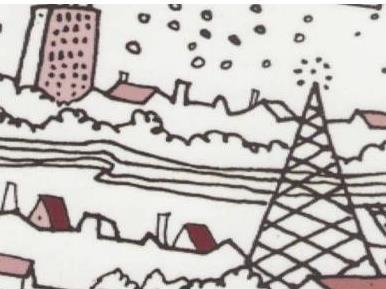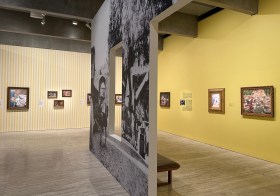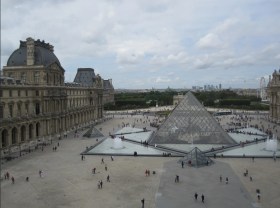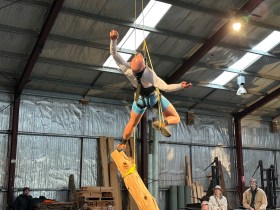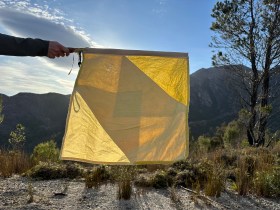Image via Western Sydney Frontier
The NSW Government’s new arts and cultural policy framework, Create in NSW, is striving for an ‘open and ambitious’ approach to the arts. Launched in February it includes 51 actions aimed at building excellence, access and strength in the sector over the next 10 years.
It includes specific and targeted strategies for regional NSW, Western Sydney and metropolitan Sydney.
This week a SAMAG panel discussion, chaired by festival director and media producer, Jess Scully, unpacked the policy. On the panel were Mary Darwell, executive director, Arts NSW; Wagga Wagga regional arts development officer Scott Howie; and performance artist and representative from the Western Sydney Arts and Culture Lobby Group David Capra. Art collector and patron John Kaldor was unable to join the panel due to illness.
For Western Sydney there are two significant changes: the decision to commit an additional $7.5m in funding over four years to the area (starting with $1m in the first year) and the move of the Museum of Applied Arts and Sciences (formerly the Powerhouse Museum) from Ultimo to Parramatta.
Capra also lauded the action to convene a Western Sydney arts and cultural roundtable so ‘that the policy will remain fluid and open and responsive to what’s happening over the course of 10 years’.
He saw the creation of the Western Sydney Arts and Culture Lobby Group in February last year, as a positive step, bringing together both independent artists and people running arts organisations such as Information Cultural Exchange, Campbelltown Arts Centre, Penrith Regional Gallery and Auburn’s Peacock Gallery.
‘For the first time in a long time all the spaces are communicating with each other and we’ve been able to really think strategically about how do we get government and policy-makers to think differently about Western Sydney.’
Darwell said its first task will be to map the cultural infrastructure and needs in Western Sydney to identify ‘where the networks are, where the opportunities are and where the gaps are’.
It has appointed SGS Consulting to undertake the research and Augusta Supple as the project officer for Western Sydney.
For Howie, who was on the ministerial reference panel for the policy, one of the most positive outcomes was the recognition that ‘regional NSW is not just a place waiting for culture to be brought to it but it is a producer of excellence and innovation and a site of cultural leadership as well’.
‘As much as we want to see stuff coming out of state cultural institutions we want to see clear pathways for regional artists getting to work with some of those institutions as well.’ He said it is already in discussions with the Art Gallery of NSW.
The panel discussion considered how the sector would achieve the key performance indicator set for increasing cultural attendance by 15% by 2019.
Darwell said there was no ‘one size fits all’ answer, adding there is now a ‘more explicit focus’ on engagement with community and building audiences in its funding profile. She highlighted the removal of admission fees for children and young people at the Australian Museum and the Museum of Applied Arts and Sciences, as a strategy that is already driving an increase in attendance rates.
Another tactic was to support artists and festivals bringing art out into the community to experience art in unexpected places.
‘Participation is an important indicator but it’s not the only indicator so that’s why our focus is on excellence, access and strength,’ she said, adding it would publish some other high-level indicators in the future.
Howie saw opportunities to encourage participation in regional NSW by getting more people to take part in creative processes. ‘Whether that’s through a local arts centre in Cootamundra or through workshops being delivered through libraries, there’s a whole heap of ways in which we are moving beyond just delivering stuff through the major performing arts centres and the art galleries..,’ he said. He pointed to the Cootamundra-based Wired Lab, a group doing contemporary sound work as well as things like teaching farmers to throat sing and then showcasing at an open day.
Capra said in Western Sydney the key to raising audience figures lay in studying the audiences that are nearby, pointing to the Iraqi film festival developed by Fairfield Museum and Gallery. ‘Also keeping in mind the way artists are working today. Many of them are working more and more outside the gallery, in the community sector.’
He gave the example of Powerhouse Youth Theatre in Fairfield, which recently launched Team Australia, and the work of Campbelltown Arts Centre with the disability sector.
In talking about how the policy might build strength Darwell focussed on two areas: professional development and networks and partnerships.
‘One of the very clear messages … was the need for the arts agency to assist in providing more opportunities for artistic growth and development and to try to be more targeted about it and also to leverage some of the relationships that we have with the cultural institutions and other organisations to achieve better opportunities.’
She drew attention to the new Western Sydney arts fellowship, a suite of arts scholarships for young regional artists, some fellowships for more mature regional artists and a new scholarship for design and technology.
It was also ‘keenly aware’ of the need to support the development of young Aboriginal artists and leaders, she said.
On networks and partnerships Darwell said it is working in a number of areas ‘across government’ to develop opportunities. ‘So for example we’ve had a partnership over the last two years or so with Family and Community Services which I think has led to some great outcomes in the space for artists with a disability and also audiences with a disability.’
‘The Minister for Health has recently announced an arts health taskforce and we’re keen to explore that further’.
For small to medium organisations applying for funding through the arts and cultural development program one of the reforms was to find more opportunities for arts organisations to have longer-term contracts and stability of funding.
From the regional NSW perspective Howie said its challenge was how to keep their artists in the region and support them in their professional development. ‘But also how to attract other artists to the region.’
‘I think there’s lots of scope for working with the local councils to develop both the hard and soft infrastructure for artists – whether that’s artists’ studios, workspaces. We’re currently putting in a bid to take over an ambulance station and convert that into a workshop space, artists’ studios, co-working space for arts organisations in our region.’
With the current focus on the viability of local councils Howie saw opportunities to share resources across council boundaries.
‘One of the things that we are looking at now is a shared touring coordinator where the councils will chip in for that position and base it out of my office and start activating the infrastructure in our smaller towns.’
Exporting work from regional NSW and Western Sydney to the wider world was also seen as key. ‘There is definitely work that is happening in regional NSW that could play in international spaces and festivals,’ said Howie, adding Bathurst’s Arts Out West has already started developing international exchanges.
Darwell agreed, saying the policy is more explicit about NSW wanting to play in the international space. ‘We believe that our artists should be supported in that and should be engaging in, particularly, the region in which we live and we see that as an opportunity for all artists in NSW not just the ones that are in metropolitan Sydney.’
